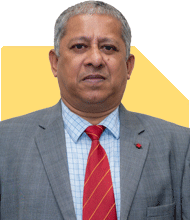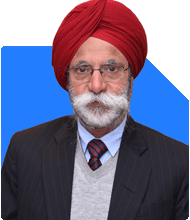Ramalingam Kalirajan |8093 Answers |Ask -Follow
Mutual Funds, Financial Planning Expert - Answered on May 01, 2024
He has an MBA in finance from the University of Madras and is a certified financial planner.
He is the director and chief financial planner at Holistic Investment, a Chennai-based firm that offers financial planning and wealth management advice.... more

I'm 48 year old and a housewife. My husband is 52 and working in a restaurant with a salary of 24k p.m. I'm looking into investing with whatever remains out of this salary, approx. 5k (my daughter who is 22 year old is contributing a part of her income for household expenses). Please advise the best schemes/ MFs that we can invest into and also advise the procedure to MF as we have no knowledge about it. Also if my daughter can invest approx 5k-8k, what are the best plans for her to invest in SIP. Please advise. Thankyou.
For you and your husband, consider starting with SIPs in diversified equity funds or balanced funds that suit your risk appetite and investment goals. As beginners, it's crucial to choose schemes with a track record of consistent performance and managed by reputable fund houses.
For your daughter, she can also opt for SIPs in equity funds aligned with her risk tolerance and long-term financial objectives. Encouraging her to start investing early can help her harness the power of compounding and achieve her financial goals.
To start investing in mutual funds, you can approach a Certified Financial Planner or a mutual fund distributor who can guide you through the process, help you select suitable funds, and assist with the necessary paperwork.
Remember, investing is a journey, and it's essential to stay disciplined, patient, and well-informed along the way. With dedication and the right guidance, you can pave the way towards a financially secure future for your family.
You may like to see similar questions and answers below
Omkeshwar Singh | Answer |Ask -Follow
Head, Rank MF - Answered on Feb 20, 2020
Ramalingam Kalirajan |8093 Answers |Ask -Follow
Mutual Funds, Financial Planning Expert - Answered on Apr 30, 2024
Ramalingam Kalirajan |8093 Answers |Ask -Follow
Mutual Funds, Financial Planning Expert - Answered on Nov 01, 2024
Ramalingam Kalirajan |8093 Answers |Ask -Follow
Mutual Funds, Financial Planning Expert - Answered on Jan 11, 2025
Prof Suvasish Mukhopadhyay |500 Answers |Ask -Follow
Career Counsellor - Answered on Mar 12, 2025
Milind Vadjikar |1106 Answers |Ask -Follow
Insurance, Stocks, MF, PF Expert - Answered on Mar 12, 2025
Milind Vadjikar |1106 Answers |Ask -Follow
Insurance, Stocks, MF, PF Expert - Answered on Mar 12, 2025
Milind Vadjikar |1106 Answers |Ask -Follow
Insurance, Stocks, MF, PF Expert - Answered on Mar 12, 2025
Milind Vadjikar |1106 Answers |Ask -Follow
Insurance, Stocks, MF, PF Expert - Answered on Mar 12, 2025
Dr Dipankar Dutta |956 Answers |Ask -Follow
Tech Careers and Skill Development Expert - Answered on Mar 12, 2025
Radheshyam Zanwar |1412 Answers |Ask -Follow
MHT-CET, IIT-JEE, NEET-UG Expert - Answered on Mar 12, 2025
Radheshyam Zanwar |1412 Answers |Ask -Follow
MHT-CET, IIT-JEE, NEET-UG Expert - Answered on Mar 12, 2025
T S Khurana |398 Answers |Ask -Follow
Tax Expert - Answered on Mar 12, 2025
T S Khurana |398 Answers |Ask -Follow
Tax Expert - Answered on Mar 12, 2025


























